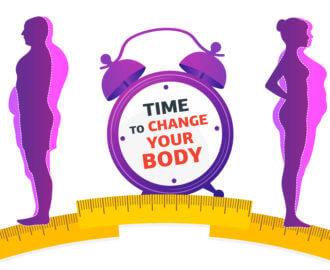Self-hypnosis: Your Quick Guide to Start NOW
Have you ever lost yourself for hours reading a great book? Or maybe forgot lunch while tending your garden? You might not even realize it but this could easily have led to self-hypnosis.
Surprised?
Read on to know more about this interesting form of hypnosis and its benefits. We’ll also cover its safety and the easy steps to get you started.
What is self-hypnosis?
Self-hypnosis is the process of transitioning yourself into a highly attentive and suggestible state. It’s similar to becoming absorbed in an activity, except that this practice also empowers to tackle negative habits and embrace change. Instead of working with a hypnotherapist, you can do it by yourself through techniques or maybe apps.
When you’re in a trance, you can then become more self-aware and open to positive suggestions you make to yourself. Also, you’d be able to realize the weaknesses you need to work on and make good use of your innate strengths.
Now, you might be asking, “Is self-hypnosis safe?”
Yes, it’s generally safe without negative side effects. However, it’s best to consult someone if you have psychological issues.
Are self-hypnosis and meditation the same?
Self-hypnosis is actually quite similar to meditation. Both practices allow you to attain a calm and relaxed state of awareness. However, meditation doesn’t come with a specific goal. When you meditate, you simply observe and accept what is (your current mood, thoughts, and feelings) with no judgment or expectations.
On the other hand, when you hypnotize yourself, you want to work on something to improve yourself such as reducing your anxiety, uncovering a past trauma, or even getting better sleep. In short, there’s a certain goal in mind.
Benefits of Self-Hypnosis
Significant research has backed up the primary benefits of self-hypnosis.
Weight Loss
When it comes to losing weight, there are a lot of factors you need to consider from self-control to emotional issues.
So, let’s talk about exactly how self-hypnosis can help you manage your weight.
First, it can help you feel satisfied. As shown in a 2018 study by severely obese participants, those who regularly used self-hypnosis techniques said they felt fuller so they don’t have to eat much. And because of this, their caloric intake was a lot less than those in the other group. In the long run, they lost more weight than the ones in the control group.
Second, it may address your negative body image, food cravings, and emotional eating as reported by a 2021 review. Moreover, the researchers noted that hypnosis can make you lose more weight, especially with dietary changes and exercise.

Self-hypnosis for weight loss is very effective.
Better Sleep
If you’re in your 60s and struggling with insomnia, you might want to have self-hypnosis a go. Participants in a 2020 study shared that it helped them sleep longer and deeper. Plus, it reduced their hot flashes too.
How to hypnotize yourself
Now that you know the benefits, you might want to try it on your own. Just remember, you’re in control of your own pace through the whole thing.
Here are the basic steps to self-hypnosis:
Set a goal
Before starting this practice, you need to know what it is you want to get out of it. Do you want to feel calmer for your next flight? Maybe you need to calm your gut? Take note as you start this activity.
Get comfy
Wear loose clothing and find yourself a cool and quiet spot, away from distractions. You can lie down— but don’t fall asleep!
Use hypnotic induction to relax
There are a few common relaxation techniques you can use to go into a trance-like state such as eye-fixation, progressive muscle relaxation, and imagery.
Eye-fixation technique
Fix your gaze on an object until your eyes close and you wind down into deep relaxation.
Progressive Muscle Relaxation
Tense up a specific group muscle group then let it relax. You can start from your feet going up to your head or even randomly from one group to another.
Imagery
When you use this technique, you can go into trance by imagining a relaxing scene such as a being in a hammock on a tropical island, watching a flowing river, or maybe looking at a calm sea.
Visualize and affirm your goal
It’s time to tap into your subconscious by visualizing what you want to achieve. For instance, if you have trouble sleeping, you could make a mental picture and silently repeat to yourself, “I’m sleeping soundly through the night.”
Return to your alert state
In maybe 5 minutes or so, bring yourself out of the trance by taking deep breaths slowly and counting down to 10.
Interested in hypnotherapy?
While the steps above may seem simple, self-hypnosis is a skill you need to develop. There are two ways to tap into your subconscious mind: learn self-hypnosis from our class here or you can always work with a certified hypnotherapist and book your hypnotherapy session here.
Either way, kudos to you for taking a step toward improving your life!


